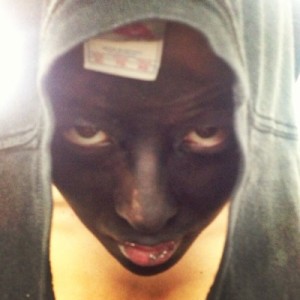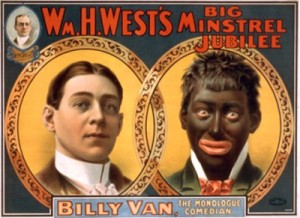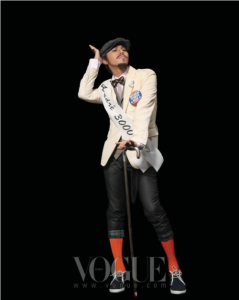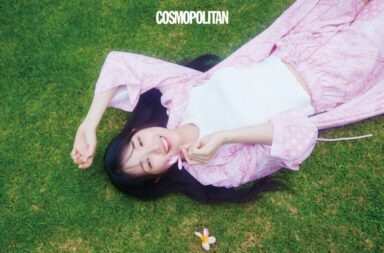 When G-Dragon of Big Bang landed in hot water for smoking pot two years ago, many North American and European fans scoffed. It’s almost a given that musicians in the west smoke marijuana and possibly do other drugs. Some musicians, like Snoop Lion (formerly Snoop Dogg), have practically built a career on the image. But now, G-Dragon has managed to land himself in hot water with some of his fans out west. On Tuesday, G-Dragon posted an image of himself on Instagram with his face circled by a t-shirt and covered in something black with the caption “X.” Controversy erupted in the international G-Dragon/Big Bang fandom known as the VIPs.
When G-Dragon of Big Bang landed in hot water for smoking pot two years ago, many North American and European fans scoffed. It’s almost a given that musicians in the west smoke marijuana and possibly do other drugs. Some musicians, like Snoop Lion (formerly Snoop Dogg), have practically built a career on the image. But now, G-Dragon has managed to land himself in hot water with some of his fans out west. On Tuesday, G-Dragon posted an image of himself on Instagram with his face circled by a t-shirt and covered in something black with the caption “X.” Controversy erupted in the international G-Dragon/Big Bang fandom known as the VIPs.
Some fans, including many who are part of the African diaspora, expressed varying levels of concern and outrage at G-Dragon’s portrayal of what is known as blackface. Others expressed outrage at people for expressing concern. Multiple VIPs at BigBangUpdates.com reported seeing first hand that G-Dragon commented on the Instagram photo to say that it was a clay mask, but Instagram’s coding prohibits users from seeing comments beyond the most recent ones. As of print time, no screenshot has been found. Others there and elsewhere noted with skepticism that it is unusual to put a clay mask on one’s eyelids. Trying to make sense of the caption, some suggested that it was an homage to X-men’s Nightcrawler character, albeit in the wrong color. (It should have been blue.)
Getting in on the action, SPIN Magazine then took the story in a direction that surprised and upset many, reporting that G-Dragon’s photo was an unfortunate attempt to show solidarity with the Trayvon Martin memorial movement. The Los Angeles Times and the Guardian (UK) then re-reported SPIN’s interpretation of events as if they were facts, eventually prompting YG entertainment to respond with the claim that the face covering was face paint for a photo shoot, that nothing offensive was intended, and G-Dragon’s face was painted multiple colors that day.
Superficially, this may seem like a story about a mistake/misunderstood intentions, a defensive fandom, and sensationalizing reporters. But it is not that simple. While some fans could not understand why the photo was such a big deal, for others it was deeply personal.  The terrible history of blackface and its uses is well documented. People from the US in particular are aware that the use of blackface is like the visual version of the N-word; while both still happen, it is not acceptable for non-Black artists to engage in them. Looking to Europe, and at Germany and the Netherlands in particular, controversy erupts each December as performers don blackface to portray Sinterklaas’s assistant, Zwarte Piet (Black Pete).
The terrible history of blackface and its uses is well documented. People from the US in particular are aware that the use of blackface is like the visual version of the N-word; while both still happen, it is not acceptable for non-Black artists to engage in them. Looking to Europe, and at Germany and the Netherlands in particular, controversy erupts each December as performers don blackface to portray Sinterklaas’s assistant, Zwarte Piet (Black Pete).
For many of the people of African descent living in these places, blackface evokes memories and images of a terrible time when Black people were caricaturized as stupid, subhuman puppets, legally considered to be three fifths of a human, and in certain parts of the world, lynched and murdered at will, just for walking down the street or daring to express romantic interest in a white person. These narratives are especially well known to North Americans, but they are not limited to one continent.
White supremacist ideas about people of many ethnic backgrounds, including African Americans and groups from all over Asia, were exported both through the process of colonialization and also through western media and cultural influences. It is really not surprising, then, that the blackface idea would pop up again and again in Korea and in K-pop. While G-Dragon may not have intended it, his post became a site for racist commentary by some members of his global fanbase. Multiple commenters, writing in Korean, Dutch and Chinese referenced Zwarte Piet, excitedly noted that he was putting on US President Obama’s face, and made other unsavory comments along those lines. Likely without planning to do so, G-Dragon managed to bring the racist out in some VIPs. And that meant that the VIPs who are Black, or otherwise sensitized to the Afro-diasporan experience, were exposed to racism simply because they were following their idol on social media.
For that alone, G-Dragon should apologize. His genius and his success have been driven by a uniquely skilled use of Afro-diasporan musical forms. The least he can do is show respect for the culture he borrows from, the people who made it, his fans and their experiences. Not only is this the right thing to do, but at the moment, it is the expedient thing to do. Later this month G-Dragon is heading to KCON in Los Angeles, home to the seventh largest Black population in the United States. Along with New York City, Los Angeles is one of the two most important sites for the development of rap and hip-hop, musical forms that were shaped by socioeconomic ghettos. These ghettos were in turn shaped by racism that was and sometimes still is manifest in blackface. To truly understand his craft, G-Dragon needs to understand this fundamental fact: his musical ancestors were the victims of blackface, and their music was, in part, a revolutionary strike against the dehumanization that blackface represents.
 It is simple to say that there is no reason one should expect G-Dragon or anyone in the K-pop industry to be sensitive to this. But in the end, that can be overly generous. To delve so deeply into the music of a community but not to learn anything about the community that made the music is a selective awareness that represents a failure on the part of the artist and his management, and this is not the first time, not even for G-Dragon. Some consider this kind of insensitivity to be an ongoing problem with Korean performers: a lack of consideration for the feelings, memories, and stories that are evoked when someone with their face painted black is looked upon. Now might be the time to get with the program. Efforts to export Hallyu to a broad North American and Latin American audience will necessitate making inroads with diverse audiences that include people of African descent.
It is simple to say that there is no reason one should expect G-Dragon or anyone in the K-pop industry to be sensitive to this. But in the end, that can be overly generous. To delve so deeply into the music of a community but not to learn anything about the community that made the music is a selective awareness that represents a failure on the part of the artist and his management, and this is not the first time, not even for G-Dragon. Some consider this kind of insensitivity to be an ongoing problem with Korean performers: a lack of consideration for the feelings, memories, and stories that are evoked when someone with their face painted black is looked upon. Now might be the time to get with the program. Efforts to export Hallyu to a broad North American and Latin American audience will necessitate making inroads with diverse audiences that include people of African descent.
Some of the controversy stems from the question of who gets to determine when a mistake is a big deal. To better understand this question, it’s important to recognize that these decisions, and each individual’s thinking about them is shaped by broader societal choices about defining and dealing with “racism.” Some forms of racism are so vicious, such as calling the cops on a Black kid in a hoodie because someone assumes, based on appearance, that he is a criminal, that sometimes more mundane racism gets a pass. Scot Nakagawa writes eloquently about this:
And as with all kinds of oppression, racism is ultimately kept in place by violence and the threat of violence (think in terms of lynchings, cross-burnings, KKK raids, etc. throughout our history). Simple prejudice seems pretty minor by comparison.
And therein lies the problem. It’s true that what G-Dragon did, at the end of the day, isn’t going to get anyone killed or leave anyone terrorized in their own home. But if that’s our only standard for what’s unacceptable, that’s a pretty low bar.
Speaking of low bars, this story was further complicated by at least one reporter at SPIN Magazine who seems to think that his assumptions pass for journalism. On top of that, a reporter at the LA Times and another at the Guardian (UK) seem to think that a SPIN Magazine article with no sources counts as a source. It’s hard to believe that this story would have been reported the way it was if the artist involved had been North American or European. Implicit in the storytelling seemed to be the assumption that G-Dragon, as a Korean artist, was well intentioned but couldn’t understand the symbolism of the actual hoodie and was too stupid to know that blackface was not the way to show solidarity with Trayvon Martin’s family. This analysis both lets G-Dragon off the hook way too easily, makes inappropriate assumptions about G-Dragon’s ability to learn from past mistakes, and ignores his financial success and social standing.
Moreover, it was very US-centric. There is no reason to think that selfies in a hoodie has become a reference point for Korean artists or their Korea-based fans. There is no reason to think that the statement would have been obvious without a proper caption, and even many of the American images made an effort to clarify the connection. If the image was meant to be an homage to Trayvon Martin, doesn’t it seem like he might have captioned the photo with something other than “X”?
In the end, this incident has provided us with an opportunity to pause, assess and learn from one another. The western press needs to do a better job of reporting on Korean artists. They are just as legitimate and important as European and North American artists. They are just as worthy of proper sourcing of stories, and they are just as human in their capacity to make painful mistakes. G-Dragon has certainly shown us this side of himself. Only time will tell if he can build on what he hopefully learned from the many VIPs who lovingly chided him. Ideally, he will acknowledge the power he has to bring both joy and sorrow into the lives of his fans, and by setting the right example, he will teach VIPs to show sensitivity to each other’s experiences.
For my part, GD is my number one bias, and I am Afro-Carribean American. The last few days have been hard for me. Seeing that image gives me a sinking feeling in my chest every time I see it. But I know that growth is possible, that G-Dragon is a genius, and hopefully those two truths will lead to a G-Dragon that I will love even more, if not tomorrow then soon enough.
(Instagram [1], SPIN, Los Angeles Times, Guardian (UK))


